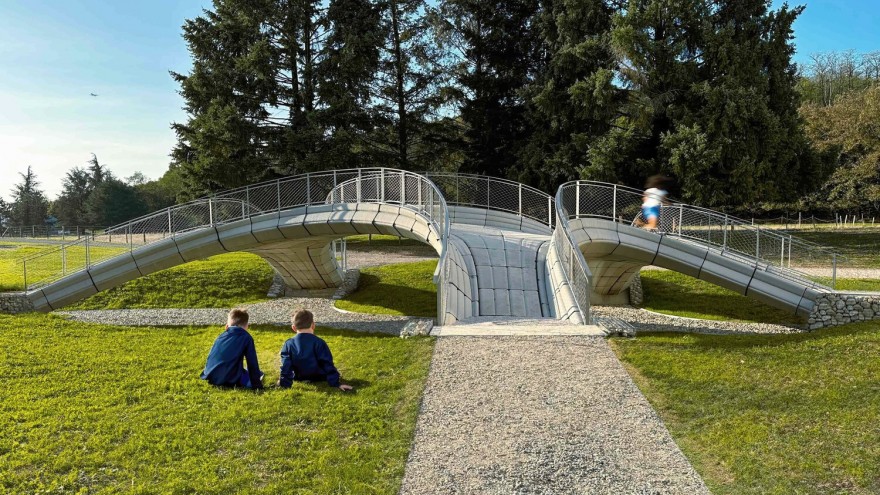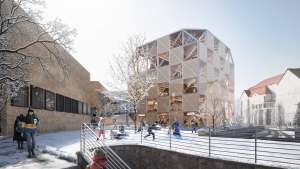The Phoenix bridge in Lyon, France, is an unreinforced arched bridge that uses compression and gravity to hold its form. Its 3D-printed wedge-shaped elements, known as voussoirs, constitute the arches and vaults of the bridge, which has a double-curved deck with swooping stepped entry points at either end.
The Phoenix, which was unveiled by Zaha Hadid Architects, together with the Block Research Group from the Institute of Technology in Architecture at ETH Zürich university, specialist 3D concrete printers Incremental3D and building-material manufacturer Holcim, is the second iteration of this revolutionary design. In 2021, at the Giardini della Marinaressa during the Venice Architecture Biennale, the same team unveiled a footbridge named Striatus - the first of its kind, composed of 3D-printed concrete blocks assembled without mortar.
The new Phoenix bridge represents the evolution of the Striatus, with the original structure reimagined into a newer, more eco-friendly version. Building on the innovations of the Striatus, the Phoenix is constructed from 10 tonnes of recycled materials, including recycled aggregates from the original blocks of Striatus. Using its ECOCycle® circular technology, Holcim developed a proprietary concrete ink for Phoenix that incorporates an optimised low-carbon formulation with a 40% lower carbon-dioxide footprint compared to the Striatus, and an overall carbon footprint that is 25% lower.
‘Phoenix is a significant milestone in technology readiness. It showcases the maturation of integrated design-to-construction technologies that were initiated with Striatus,’ explains Shajay Bhooshan, head of computation and design at Zaha Hadid Architects. ‘There have been improvements in the robustness of the digital design tools, closer alignment with the numerous structural design and circularity-related improvements, tighter integration with robotic concrete-printing parameters, and extensive calibration to improve efficiency of production of almost double the number of blocks in less printing time.’
Together, the partners are assessing how the bridges could be scaled up to provide more generalised sustainable infrastructure solutions across the globe.
Read more







